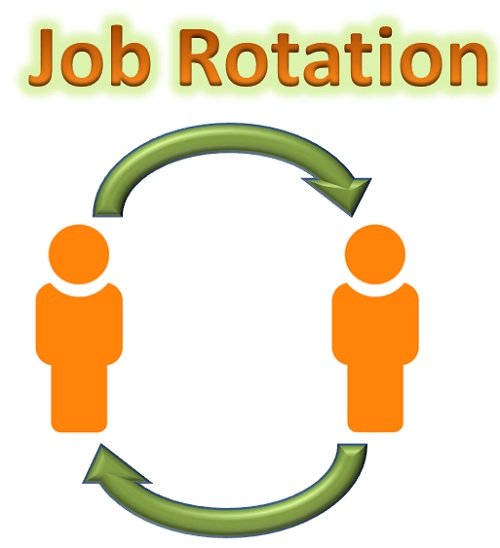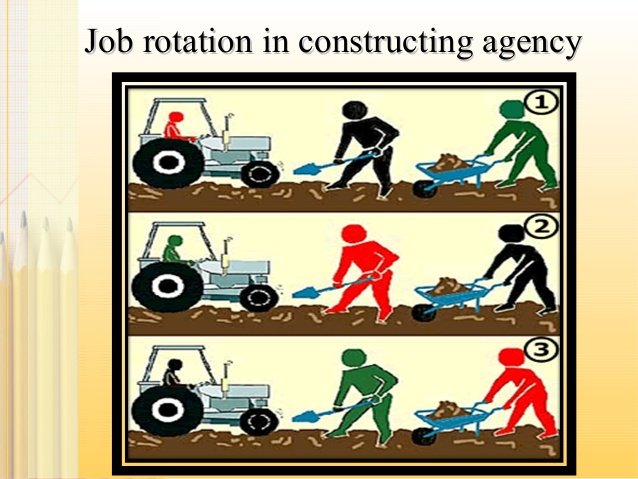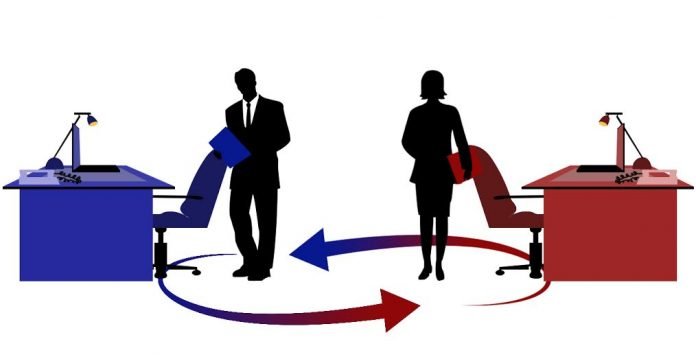How Job Rotation Motivate Employees
Job rotation is a job design technique used by the organizations in which employee’s assigned jobs are rotated throughout their employment in an organization. It is also defined as scheduled exchange of persons in different jobs within the same organizations. Many successful organizations are practicing job rotation in order to increase the employee knowledge, skills, and motivational levels, etc. Modern organizations are encouraging rapid job rotation and they make it as an essential part of the employee development programs. Job rotation programs are the common employee development strategies in most of the organizations and it is more suitable for the top executive positions and for technical lead positions.
Objectives of job rotation

Exposing employees to different or all areas of the organization
Exposing employees to all areas of the organizations can make them aware of company’s different tasks and how these tasks are operated. It gives a scope to the employees in knowing company policies, strategies, procedures, and objectives in order to fulfill the goals of the organization.
Wider range of work experience
Job rotation facilitates maximizing the employee’s expertise in performing various tasks. It gives them a chance of getting a wider range of work experience and growth. Employees with a wider range of work experience can act as a competitive advantage to the firms and it fulfills the gap due to employee shortage during leaves and employee turnover through which it creates workforce flexibility.
To reduce monotony
Continuous repetitiveness involved in a job throughout the years can cause monotony to the employees. Monotony and boredom reduce job satisfaction and it makes the employees unproductive. Job rotation creates interest in performing challenging tasks involved in new jobs.

To test the competencies
Testing employees skills and competencies by assigning various tasks during job rotation, helps in analyzing, identifying and assigning challenging projects to the potential and skilled employees where do they have expertise, placing the employees at what they are best and where do they have expertise can maximize workforce efficiency and productivity.
To motivate the employees
Assigning new and challenging tasks can fulfill the self-actualization needs of the employees and motivates the employees to fulfill the goals of the organization. Employees can improve their skills and knowledge through performing various tasks and it not only reduces the boredom and it may create a scope of promotions and career growth.
Types of job rotation
Job rotation is of two types, task rotation, and position rotation
Task rotation
Task rotation reduces the boredom associated with repetitive tasks and it is usually seen in industries where there is a high degree of repetitiveness and physical demands on the body. Workers cannot tolerate such an extremely tedious work for longer period of time so that various job rotation programs are common to such a high degree of physical strain involved jobs.

Here workers or employees are periodically shifted to other tasks in order to reduce their stress in performing repetitive tasks.
Position rotation
Position rotation involves employees are rotated in different positions, at various departments and subsidiaries in order to expose them to the new knowledge and skills. It includes two types i.e. within-function job rotation and cross-functional job rotation.
With in-function job rotation
In which job rotation involves employees are shifted in between similar jobs having similar responsibilities within the same operational or functional areas.

This approach is more suitable to the lower and middle-level employees those who face boredom and monotony by doing repetitive tasks.
Cross-functional job rotation
Here job rotation involves employee are shifted in various positions in different levels with different roles and responsibilities in order to maximize the skills and knowledge of the employees.

Cross-functional job rotation is more suitable to the higher level employees with multitasking capabilities. Multinational companies use cross-functional job rotation to fulfill the skill and knowledge gaps at various subsidiaries and at different positions.
Various steps in the process of job rotation
- Assessing the suitability of the job rotation for the organization
- Identifying the job rotation necessity
- Developing suitable job rotation strategies
- Designing the job rotation programs suitable to the developed strategies
- Communicating the finalized job rotation program to the managers, stakeholders, and employees of the organization
- Implementing the job rotation program in the organization successfully
- Periodical review and follow up
Advantages of job rotation
- Job rotation increases the employee knowledge and skills in performing various tasks
- It creates flexibility in assigning different jobs to the employees during employee shortage
- It highly reduces the monotony and boredom occurred due to repetitive tasks
- Job rotation can fulfill the self-actualization needs of the employees
- It brings the hidden talents of the employees while performing different tasks
- It motivates the employees by creating interest in performing new jobs
- It helps in increasing the employee’s career growth
- It helps in identifying the right person for the right job
- Highly motivated employees with challenging tasks can achieve individual and organizational goals effectively
- It fulfills the expectation gaps in various jobs by assigning right persons
- Job rotation can create a positive attitude in the minds of the employees towards organization
- It maximizes the strengths of the employees by creating opportunities
Disadvantages
- Job rotation is not suitable for all the jobs, all the employees and for all the organizations
- It can create confusion in the workplace about work related issues and about reporting hierarchy
- Errors may occur while employees of the other departments perform the tasks
- Imperfect job rotation can decrease the output and result
- Employees may feel tough to handle new tasks




